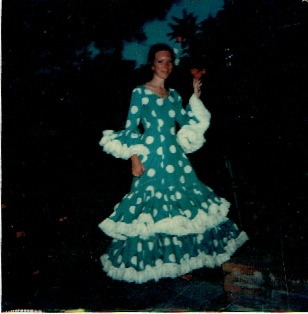...we all must sing
"Impossibility, like Wine / Exhilarates the Man/ Who tastes it"
(Emily Dickinson)
Saturday, May 17, 2014
Friday, May 9, 2014
Another One for the Hymnal
Blind Willie Johnson's "I Know His Blood Can Make Me Whole":
Pair with Pablo Neruda's "Ode to Wine":
Wine
moves the whole springtime,
joy grows like a plant,
walls crumble,
boulders,
abysses close up,
song is born.
Pair with Pablo Neruda's "Ode to Wine":
Wine
moves the whole springtime,
joy grows like a plant,
walls crumble,
boulders,
abysses close up,
song is born.
Sunday, May 4, 2014
Of Manly Tables and Girly Drinks
Two quick follow-ups to my last post on gender and drinking.
First, on the manliness of making tables:
Both Whiskey Catholic and the Woodford Reserve bourbon commercials I mentioned last week suggest that making furniture (a table for the former, a bookshelf for the latter) is a hallmark of manliness.
For the record, I love hand-made furniture. Growing up, all the activity in my house swirled around a large, rustic wooden kitchen table. That table was made by hand. By my mom. When she was pregnant with me.
Apparently, she also made a bookshelf. And a desk.

Another note:
Katy Waldman, building on this post by Lisa Wade, asks about the flipside of manly drinking: girly drinks.
Waldman makes a couple of great points that further highlight the absurdity of gendered drinking. First, in considering the notion that drinking whiskey is considered “manly” because it involves proving yourself by drinking the hard stuff, she observes, “Other types of self-punishing willpower—the feminized kinds—only attract scorn.” Whiskey is manly because it’s “hard,” but vodka is feminine because… why?
Waldman and Wade also point out that women who transgress gender norms in drink-ordering—who order whiskey at a bar—can be treated as something special. But this isn’t really challenging gender norms, just reinforcing the idea that male-associated drinks are better and more worthy. In ordering whiskey, these girls mark themselves as “cool girls,” setting themselves apart from the other, less cool women who drink, I don’t know, wine coolers.
Waldman writes:
Wade makes a smart observation, which is that while bartenders and waitstaff oftenexpect their female customers to order “juicy or sweet” beverages, those who defy convention with a whiskey neat get vaulted to cool-girl glory. “This is typical for America today,” she writes. “Women are expected to perform femininity, but when they perform masculinity, they are admired and rewarded.”She’s right. I can still feel the heat shimmer of your judgment, reader. And the side-eye I’m likely to get, asking a waiter for something “refreshing” or “light” (or, God forbid, “bubbly”) is compounded by the approval my female friends draw just by opting for “one of your darker beers, please.” A girl who handles her liquor—and what a weird verb, handle, as if recreational drinking were some kind of beast to manage—seems “down,” chill, hot. She’s almost one of the guys, and in that wordalmost dwell all the mysteries of sex appeal us Schnapps-sucking chicks will never understand.
It seems to me that the healthiest attitude towards gender and drinking is the one expressed by a bartender Waldman quotes, who tells her “But honestly, the women bartenders I work with tend to be a lot less opinionated about this stuff than my male friends. We respect each other’s right to go order a martini and then an old fashioned.”
If you like it, drink it. Come to think about it, that was kind of my mom’s approach to crafts: she made the flamenco dress below (she was living in Spain at the time) and she made a table. I don’t think she gave much thought to what either activity said about her gender identity. If she wanted it, and could make it, why not do it?

Subscribe to:
Posts (Atom)